"The butterfly counts not months but moments, and has time enough."--Rabindranath Tagore
When we think of orange and autumn, we think of the marriage of the Gulf Fritillary (Agraulis vanillae), and the Mexican sunflower (Tithonia).
The silver-spangled Gulf Fritillary, a showy orange butterfly, looks like two different species. When it spreads its wings, it's orange. The underwings: silver.
"Dazzling," agrees butterfly guru Art Shapiro, UC Davis distinguished professor of evolution and ecology.
"This dazzling bit of the New World Tropics was introduced into southern California in the 19th Century --we don't know how-- and was first recorded in the Bay Area before 1908, though it seems to have become established there only in the 1950s," he says on his website.
"It can be quite common in the East and South Bay --particularly in Berkeley--and has been found breeding spontaneously as far inland as Fairfield where, however, it is not established. There are scattered records in the Central Valley and even up to Folsom, perhaps resulting from people breeding the species for amusement or to release at social occasions."
The Gulf Frit bred in Sacramento in abundance on Passiflora in the early 1960s, Shapiro relates. "It seems to have died out by the early 1970s, however. Intolerant of hard freezes, it still managed to survive the record cold snap of 1990 that largely exterminated the Buckeye regionally!"
Its host plant: Passiflora or passionflower vine. Plant it and they will come (at least in this area)!
"Happiness is a butterfly, which when pursued, is always just beyond your grasp, but which, if you will sit down quietly, may alight upon you."--Nathaniel Hawthorne
Attached Images:
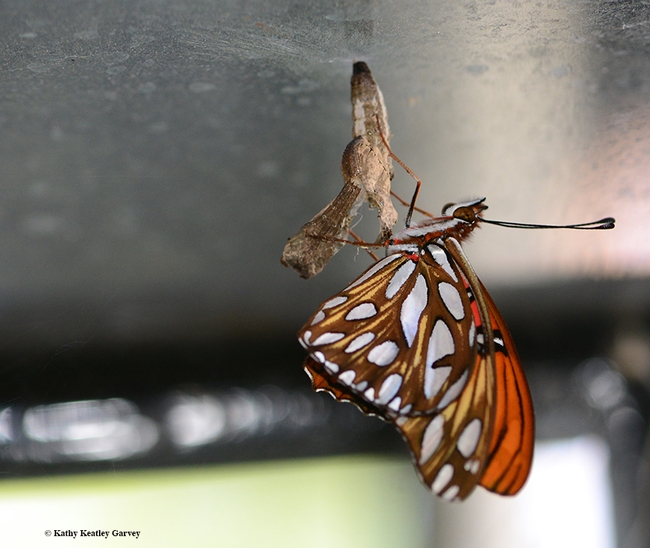
A newly eclosed Gulf Fritillary. (Photo by Kathy Keatley Garvey)
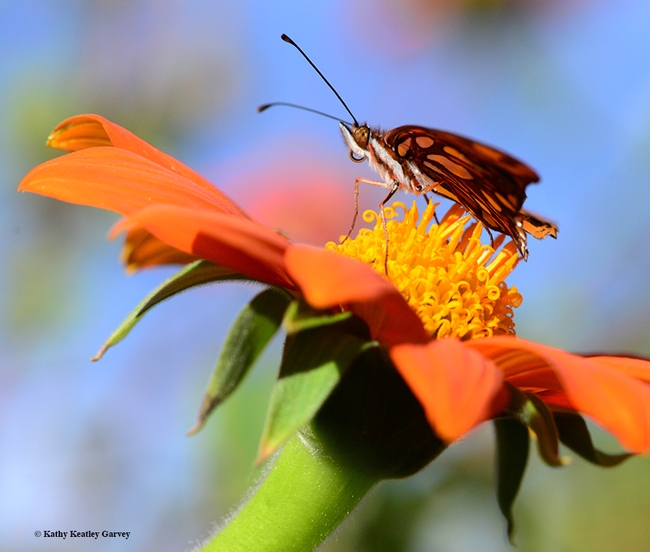
The Gulf Fritillary will soon be able to take flight. (Photo by Kathy Keatley Garvey)
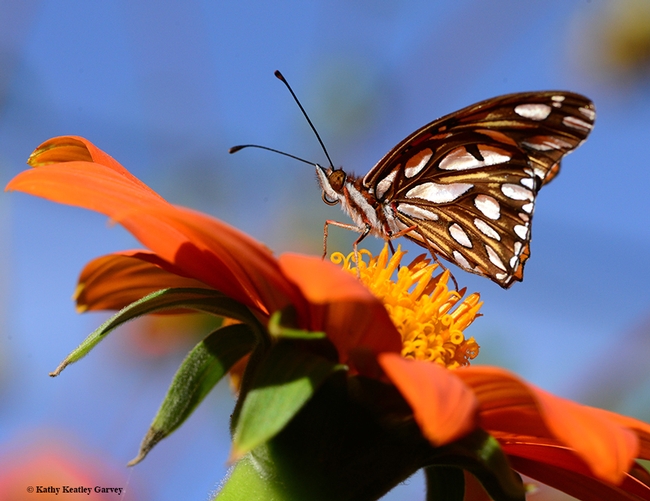
The silver-spangled Gulf Fritillary, a showy orange butterfly, looks like two different species. When it spreads its wings, it's orange. The underwings: silver. (Photo by Kathy Keatley Garvey)
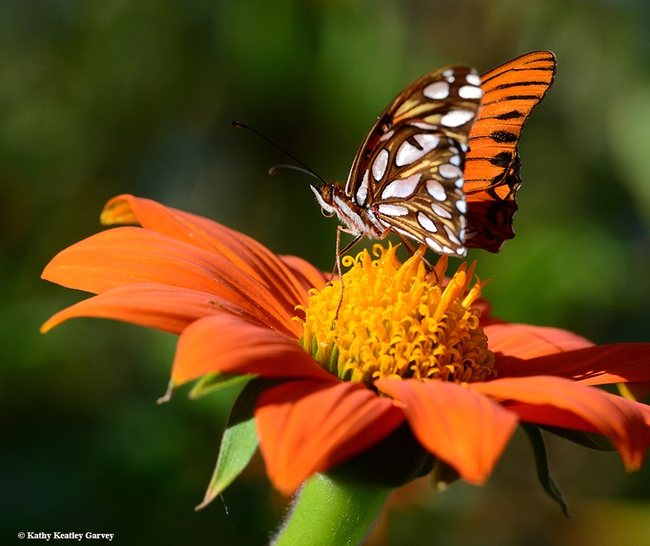
Not two butterflies; this is one, the Gulf Fritillary, Agraulis vanillae. (Photo by Kathy Keatley Garvey)
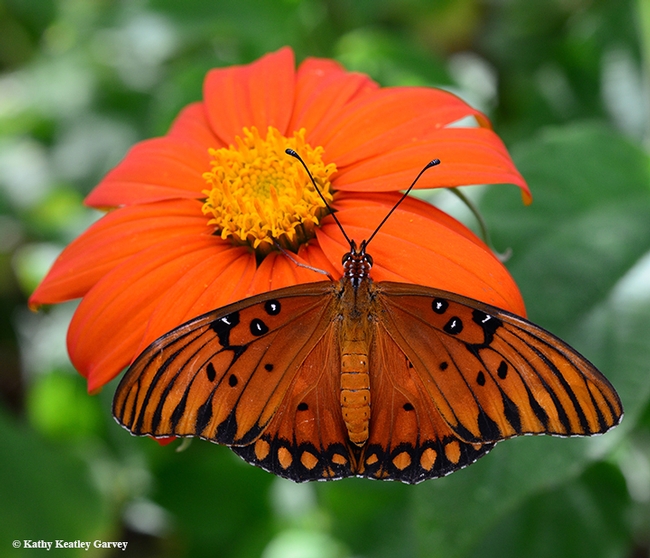
The showy Gulf Fritillary on a Mexican sunflower (Tithonia). (Photo by Kathy Keatley Garvey)